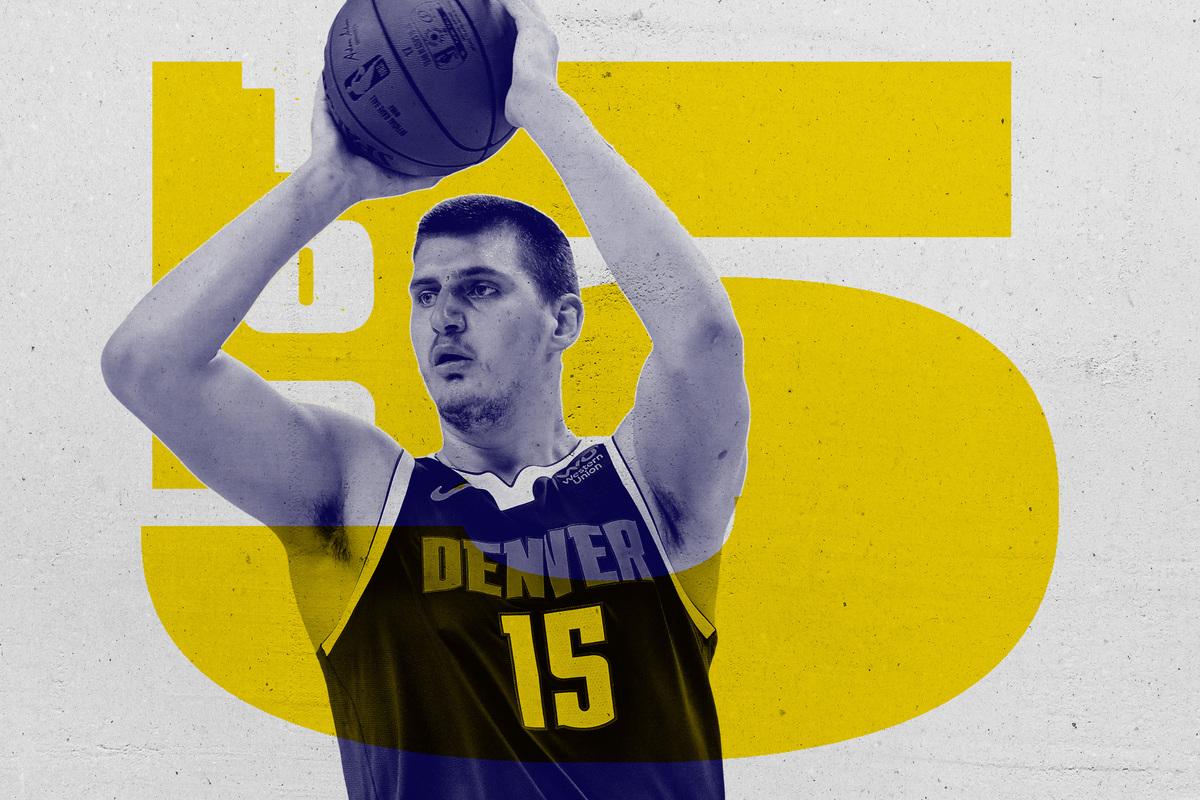
Basketball is (maybe, possibly) on the horizon. To help reintegrate us to a life of Giannis hammer dunks, James Harden dribbling for 24 seconds, and 76ers fans yelling at you for some reason, we’re rolling out top-five rankings in 20 different categories. Most of the rankings were voted on by The Ringer staff, but each day will feature one writer’s subjective skill-based list.
The criteria for the best playmakers can be simplified to this: Who would you want running your offense? Here are the top five choices:
5. Damian Lillard, Trail Blazers
As a working definition, a playmaker should be more than a passer. They have to be able to carry the full weight of an offense, particularly in a league in which the only players with real sway over the defense are those respected first as scorers. Lillard certainly qualifies. In some cases, opponents offer him so much respect that they betray their fears—they sell out hard enough to take away Lillard’s shot that they wind up giving him the run of the place instead. His standing as a playmaker comes from what he makes of that freedom. In the past two seasons, Lillard has maintained an impeccable balance in creating for himself and empowering others. Although he has the ball in his hands just as much as James Harden or Luka Doncic, it doesn’t always feel like it; he tends to give the ball up earlier and more easily than some of his ball-dominant peers, even if it still comes back to him in the end. What some accomplish with ballhandling hypnotism, others like Lillard manage by running around screens for a longer con.
The result is a vibrant, layered offense and one of the most formidable pick-and-roll attacks in the league. Portland has centralized most of the playmaking responsibility to its guards, and the most to Lillard. The offense literally does not work without him; watching the auxiliary Trail Blazers drift through possessions makes it apparent how much the entire operation benefits from Lillard’s steering. It’s his push off the dribble that sets things in motion, his reads that allow a possession to develop to its fullest, and his scoring that often punctuates the entire sequence in the end. The totality of that work is enough to give Lillard the edge over top-shelf competition. Leaving Giannis Antetokounmpo off this list feels somewhat criminal, even if it’s largely a matter of interpretation; the only real argument against him is that being a top playmaker connotes a half-court virtuosity that Giannis hasn’t quite cracked. Strong cases, too, could be made for Chris Paul or a healthy Stephen Curry. Lillard just has more direct authorship over a greater number of his team’s possessions—the crux of playmaking as we know it.
4. Nikola Jokic, Nuggets
There’s so much we still have to learn about Jokic—about the ideal structure for his talents, what kinds of teammates will best support him, and the balance of what he should be doing when. Nothing is straightforward when a team’s lead playmaker is 7 feet tall. Yet Jokic, with his undeniable aptitude, turns those sorts of open questions into captivating possibilities.
What distinguishes Jokic is the complexity of his reads, which reduce the chaos of NBA basketball to its abstractions. When Jokic works from the top of the floor, he inverts the shape of the defense and then teases it apart, beginning by forcing an opposing center—often the last line of defense—to abandon their post. The Nuggets don’t give Jokic the ball to bring it up the floor or to programmatically drive and kick. They give him the ball to see what others can’t, and by doing so elevate good action to unscoutable flow. Only one other team has scored more points off of cuts this season, further evidence of the way the skills of a star player impress certain priorities upon his team.
At 25 years old, Jokic may already be the league’s best passer. He’s also one of the game’s most capable scorers in the post, putting him in the increasingly slight center of an important Venn diagram. Modern basketball runs through the perimeter largely because that’s where the game, under its current parameters, comes easiest. Attempting to create offense from the inside out is attempting to create offense with the walls closing in; the crowding of the paint, a narrower field of view, and the ticking clock of a three-second violation will nudge even a talented big toward inefficiency. What insulates Jokic is his ability to see his way out, turning the low block into a potential starting point rather than a dead end.
3. Luka Doncic, Mavericks
In a league of clever systems and extraordinary stars, the top offense—by a significant margin—is orchestrated by a 21-year-old Fortnite enthusiast who at the present moment may or may not be in basketball shape. Surrounding Doncic with shooters is formula enough for the Mavericks to score well. With the right shooters and the right direction, however, Dallas has managed to crash the playoff race while Doncic stakes a claim for the All-NBA first team. There is a chasm between the prospects who put up numbers and the players who run the league. This season, Doncic Euro-stepped across it—and proved himself worthy of a different kind of consideration and a higher level of criticism.
There’s a compliment in the fact that Doncic’s decision-making is analyzed as if he were a fully established player. Anything less would frankly be condescending. Doncic has been so dominant within his individual matchups that he has sustained real, teamwide success. Even the defenders who understand this are still vulnerable to the way he nests one fake into another, layering his deceptions until they become impenetrable. Some top scorers are frustrating precisely because they are forthright; it’s hardly enough to know that Giannis wants to attack the rim when many opponents aren’t big enough or quick enough to do anything about it. Doncic is exasperating in a very different way—the kind that can leave a defender unclear of what exactly transpired. It doesn’t make sense that Doncic is able to drive to the basket more often than Ja Morant or De’Aaron Fox. That’s just the way it is.
With his hard-earned freedom of movement, Doncic generates more total points off his scores and assists than all but three players. Two rank above him on this list. The third is the same age as Doncic, and does what talented young players so often do: run up their numbers for one of the worst teams in the league. Some part of a team’s success (or lack thereof) goes beyond any one player. Another part is a matter of material difference.
2. James Harden, Rockets
The Great James Harden Debate—now a cherished NBA tradition—has never been concerned with Harden’s talent so much as whether he uses that talent for good. All of which means that Rockets fans neck deep in MVP voting conspiracy theory and media types clutching their pearls over the sanctity of the traveling rules begin at essentially the same place. Harden is a great player—too great to be disrespected as he has, perhaps, or too great to rely on cheap tactics, but fundamentally great. Twitter wars are waged because of the way we view truths through our own impressionistic lenses.
If we set those aside, we can see one thing clearly: Building a team around Harden is one of the safest ways to 50 wins and an elite offense. That was true when he ran a space-age pick-and-roll with Dwight Howard or Clint Capela; it was true when he took turns isolating alongside Chris Paul; and it’s true now that he’s made room for Russell Westbrook. Each of those stages required its own mode of playmaking. Harden used to set up Houston’s shooters by attacking the paint, collapsing the defense, and kicking to the corners. Assisting was largely an act of momentum. More recently, it’s become one of positioning—a response to defenders edging a step or two in Harden’s direction before he even makes his move.
Houston runs the NBA’s most methodical offense, largely because of how much Harden can accomplish within a 5-foot radius. In general, the purpose of a defensive game plan is to help teams cover ground—to triage the threats on the floor in a way that prevents overexposure. Harden reduces those best-laid plans to a single opponent or, more recently, to a desperate double-team. There may be no greater affirmation of a star’s playmaking ability than opponents regularly running a second defender his way before crossing half court.
1. LeBron James, Lakers
Running an offense is a negotiation, and LeBron always seems to have the last word. If a cutting teammate causes a snag in the coverage, he’ll thread the ball where it needs to go, nutmeg optional. If there is a weak defender anywhere on the floor, he will drag them into view before bullying them into submission. If there is an adjustment to be made in a playoff series, LeBron will identify it himself, enact it, and anticipate whatever comes next. No player is more qualified to think his way through a game.
That much remains true, even as the shape of LeBron’s game has changed through the years. Being 35 in the NBA means picking your spots; James has long been at his most comfortable when surveying the floor, which works well for a player who shouldn’t be driving hard to the rim for quarter after quarter, night after night. It’s all about balance. None of this has stopped the Lakers from dominating the conference, no matter their idiosyncrasies. James has often been the only reliable playmaker for a team with below-average 3-point shooting. They fielded one of the best offenses in the league, regardless. No player has directly created more points for his teammates.
In terms of volume, players like Harden and Doncic likely generate more offense than James in an entire season. But who does more when every possession is of the utmost importance? Who delivers deep into the fourth quarter and well beyond fatigue? There is a point in most extended playoff series when everything seems to break down. It’s then that LeBron, who is clearly no slouch under normal circumstances, makes apparent the full depth of his value. The reality is that James is just too strong and too smart to actually stop. You don’t play matchups against him; you do what you can to survive.

